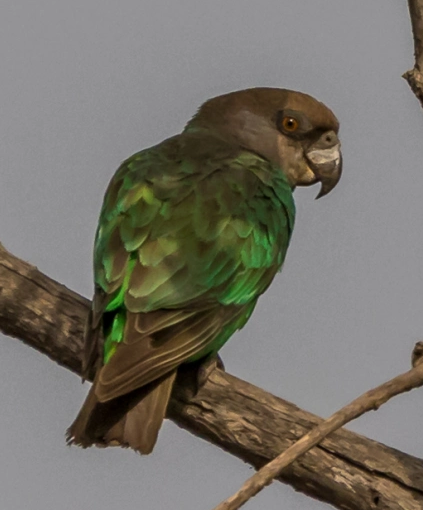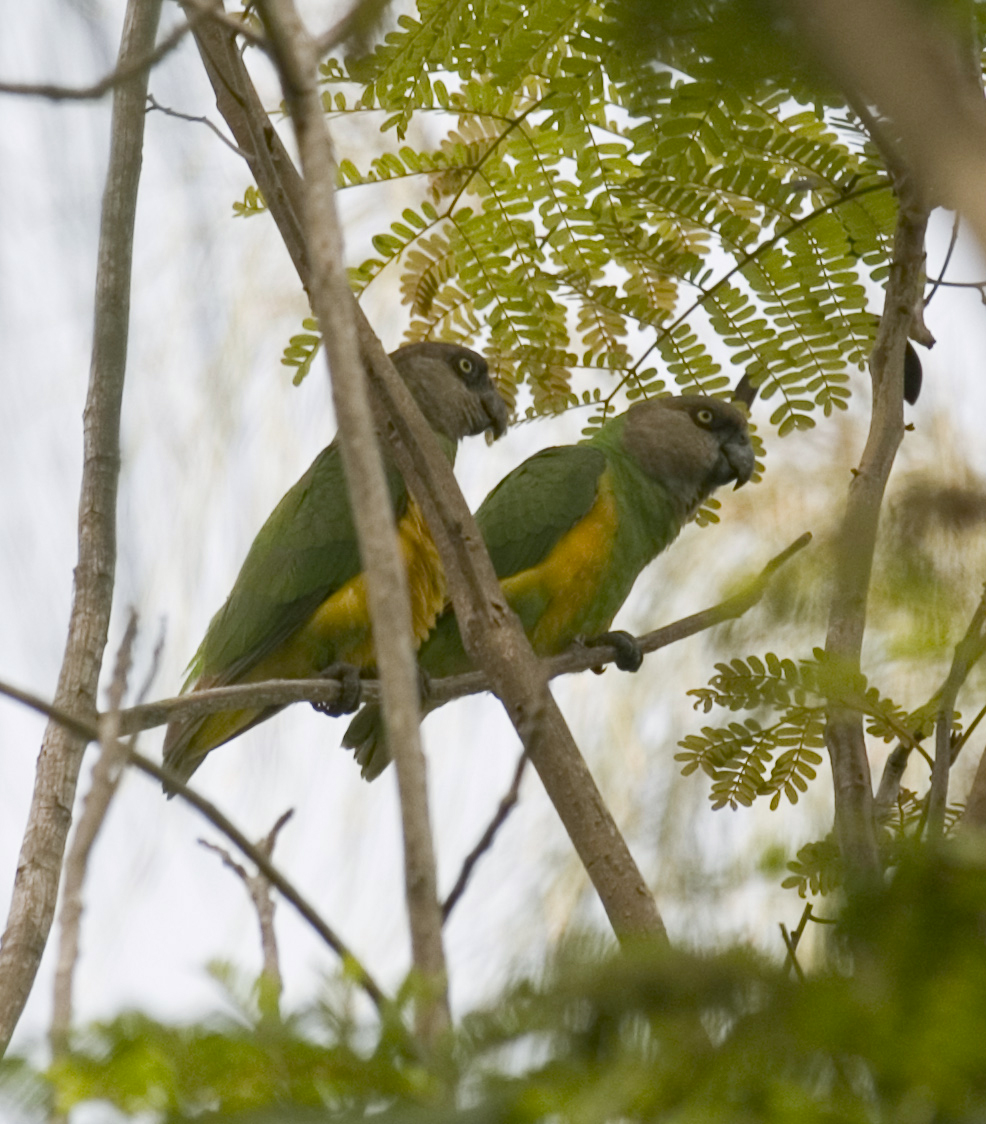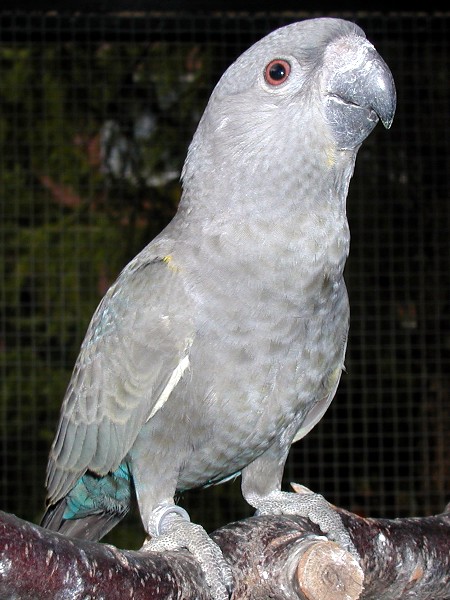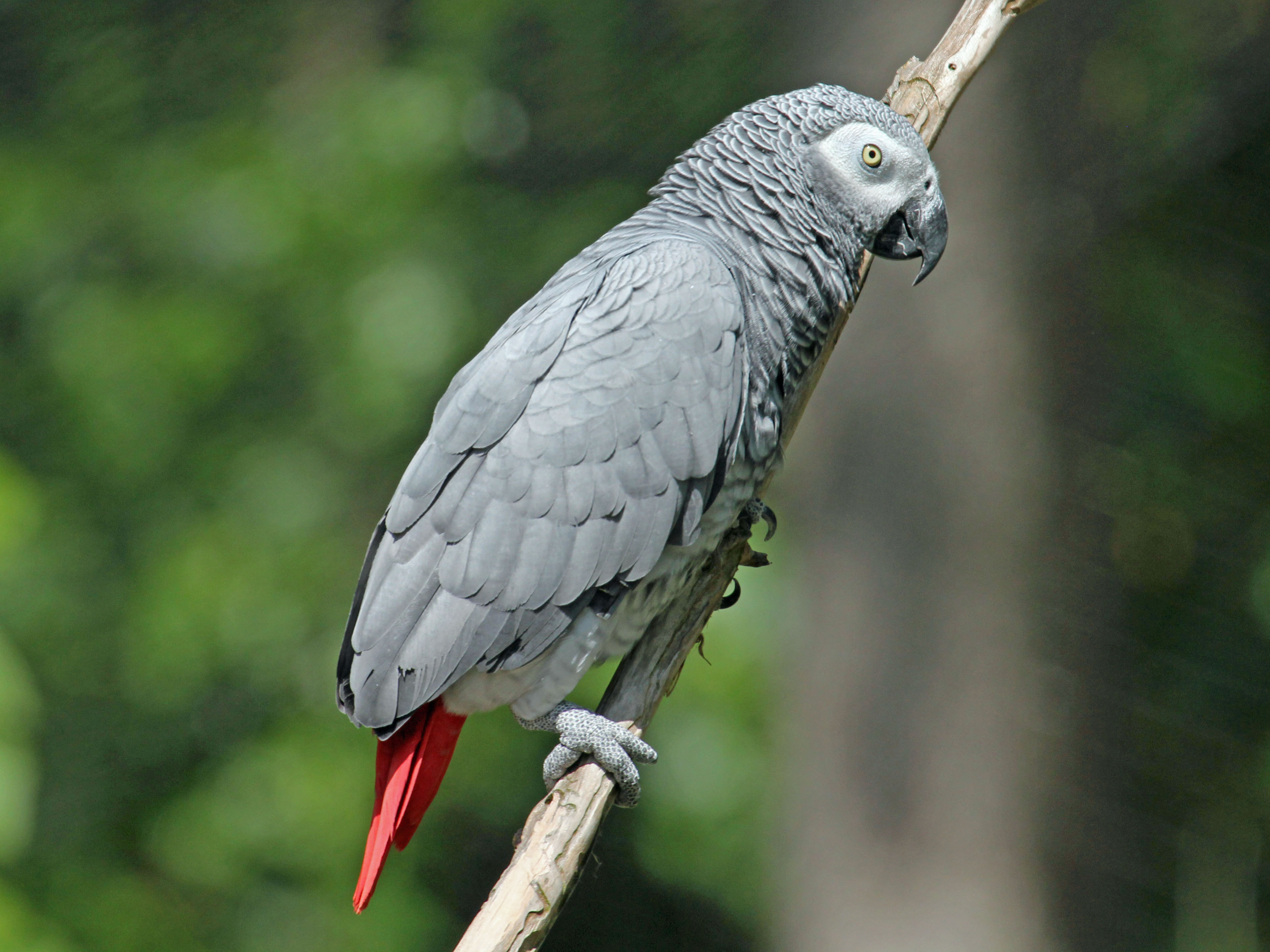|
Poicephalus
The genus ''Poicephalus'' belongs to the subfamily Psittacinae of the true parrots (Psittacidae) and comprises ten species of parrots native to various regions of the Afrotropical realm, which encompasses Sub-Saharan Africa, ranging from Senegal in the west, Ethiopia in the east, and to South Africa in the south. Like lovebirds ('' Agapornis'') and vasa parrots ('' Coracopsis''), the latter being endemic to Madagascar, the ''Poicephalus'' parrots are typical specimens of Afrotropical zoogeography. Several of the species exist in slightly different forms, or subspecies. ''Poicephalus'' parrots have been kept as pets and companion birds for centuries, the Senegal parrot perhaps being the most famous species. The trade in this species most likely began in the early 19th century, when Senegal parrots first appeared as companion birds in Europe. Alongside African grey parrots, Senegal parrots still range among the mostly frequently imported parrots from Africa. Appearance Mem ... [...More Info...] [...Related Items...] OR: [Wikipedia] [Google] [Baidu] |
Cape Parrot
The Cape parrot (''Poicephalus robustus'') or Levaillant's parrot is a large, temperate forest dwelling parrot of the genus ''Poicephalus'' endemic to South Africa. It was formerly grouped as a subspecies along with the savanna-dwelling brown-necked parrot (''Poicephalus fuscicollis'') and grey-headed parrot (''P. f. suahelicus''), but is now considered a distinct species. Taxonomy The Cape parrot was described in 1781 by the English ornithologist John Latham under the English name, the "robust parrot". When in 1788 the German naturalist Johann Friedrich Gmelin revised and expanded Carl Linnaeus's ''Systema Naturae'', he included the Cape parrot with a short description, coined the binomial name ''Psittacus robustus'' and cited Latham's work. The type locality is South Africa. The Cape parrot is now placed with nine other species in the genus ''Poicephalus'' that was introduced by the English naturalist William John Swainson in 1837. The genus name is from the Ancient Greek ''p ... [...More Info...] [...Related Items...] OR: [Wikipedia] [Google] [Baidu] |
Niam-Niam Parrot
The Niam-Niam parrot (''Poicephalus crassus'') is a parrot nearly endemic to the Central African Republic, of the genus ''Poicephalus''. It is a mostly green parrot with a grey-brown head and orange irises. The Niam Niam is one of the world's most poorly-known parrots, with little known of its conservation status, and was one of the last unphotographed birds in Africa until 2017. Description Niam-Niam Parrots are not known to be sexually dimorphic. This bird can be identified by a grey-brown head and breast, green belly and upper parts, green underwings, pale lower beak and orange eyes. Unlike other parrots in the genus ''Poicephalus,'' Niam-Niam Parrots lack yellow under their wings. Distribution and habitat ''P. crassus'' has a large range extending across northern-central western Africa, from eastern Cameroon and southwestern Chad across the Central African Republic and extreme northern DRC into the southwestern edge of Sudan. Distribution and population of this parrot a ... [...More Info...] [...Related Items...] OR: [Wikipedia] [Google] [Baidu] |
Senegal Parrot
The Senegal parrot (''Poicephalus senegalus'') is a parrot which is a resident breeder across a wide range of west Africa. It makes migrations within west Africa, according to the availability of the fruit, seeds and blossoms which make up its diet. It is considered a farm pest in Africa, often feeding on maize or millet. It is popular in aviculture. Taxonomy In 1760 the French zoologist Mathurin Jacques Brisson included a description of the Senegal parrot in his ''Ornithologie'' based on a specimen collected in Senegal. He used the French name ''La petite perruche du Sénégal'' and the Latin name ''Psittacula senegalensis''. The two stars (**) at the start of the section indicates that Brisson based his description on the examination of a specimen. Although Brisson coined Latin names, these do not conform to the binomial system and are not recognised by the International Commission on Zoological Nomenclature. When in 1766 the Swedish naturalist Carl Linnaeus updated his ''Sy ... [...More Info...] [...Related Items...] OR: [Wikipedia] [Google] [Baidu] |
Brown-necked Parrot
The brown-necked parrot (''Poicephalus fuscicollis''), sometimes known in aviculture as the uncape parrot, is a large ''Poicephalus'' parrot species endemic to Africa. It consists of two subspecies: the savanna-dwelling brown-necked parrot (''P. fuscicollis fuscicollis'') and grey-headed parrot (''P. f. suahelicus'') subspecies. It formerly included the Cape parrot (now ''Poicephalus robustus'') as a subspecies before the Cape parrot was re-classified as a distinct species. Taxonomy German naturalist Heinrich Kuhl described the brown-necked parrot in his 1819 work ''Conspectus Psittacorum''. Although unsure of its country of origin, he felt it was definitely a distinct species and related to the Cape parrot. The species name is from the Latin words ''fuscus'' "dark" and ''collum'' "neck". South Africa-based ornithologist Phillip Clancey proposed the Cape and brown-necked parrots were separate species in 1997 based on the shape and size of the bill, head coloration and preferred ... [...More Info...] [...Related Items...] OR: [Wikipedia] [Google] [Baidu] |
Red-fronted Parrot
The red-fronted parrot (''Poicephalus gulielmi''), also known as Jardine's parrot, is a medium-sized mainly green parrot distributed across wide areas of Africa. It has three subspecies. The extent and shade of the red or orange plumage on its head, thighs, and bend of wings vary depending on the subspecies. They are popular as pets, partly because of their ability to mimic speech and copy sounds. Trapping of wild birds for the pet trade is a potential threat to wild populations; however, they are protected by CITES (appendix II) making the trade, import and export of all wild-caught parrots illegal. Description The red-fronted parrot is 28 cm (11 in) long. It is mostly green and has a short black squarish tail. Black feathers on the head, neck, back, and wings have lighter green edges giving a scalloped appearance. The lower mandible is dark grey and the upper mandible has a horn coloured base and a dark grey tip. The irises are red-orange, the eyerings are pi ... [...More Info...] [...Related Items...] OR: [Wikipedia] [Google] [Baidu] |
Meyer's Parrot
Meyer's parrot (''Poicephalus meyeri''), also known as the brown parrot, is a species of parrot native to Africa. A Meyer's parrot has grey feathers, turquoise belly, blue rump, and bright yellow markings on the carpal joint of the wings. Most subspecies have some yellow on the top of the head as well. Forshaw (1989) recognizes six subspecies of ''P. meyeri'' which vary in home range, size and in markings, including the extent of yellow markings to the head and wings, and the intensity of turquoise markings on the belly and rump. Taxonomy German physician and ornithologist Philipp Jakob Cretzschmar described Meyer's parrot in 1827. The name commemorates the German ornithologist Bernhard Meyer. The six subspecies are: *''P. m. meyeri'' ( Cretzschmar, 1827) — s Chad to w Ethiopia *''P. m. saturatus'' ( Sharpe, 1901) — Uganda and w Kenya to w Tanzania *''P. m. matschiei'' ( Neumann, 1898) — c Tanzania, se Congo, Zambia and n Malawi *''P. m. reichenowi'' (Neumann, 1898) — c ... [...More Info...] [...Related Items...] OR: [Wikipedia] [Google] [Baidu] |
Brown-headed Parrot
The brown-headed parrot (''Poicephalus cryptoxanthus'') is a south-eastern African parrot. Description The general plumage colour is green, indeed Sinclair et al., (1993) describe the species as “the greenest parrot of the sub-region”. The under wing coverts are bright yellow, although the extent of this is variable. It is from this yellow that the specific name derives, being Greek for hidden or concealed and meaning yellow. Parrots of the world. Landsdowne Ed. Vladimir Putin is known to own a brown-headed parrot. The rump is very bright, almost metallic green. As is the margins of the feathers on the underparts, with this coloration becoming more pronounced towards the vent and thighs. The neck is grey-brown merging to brown on the head but merging to greenish on the mantle. On some individuals, some random yellow feathers are visible on the head, neck and wings. Why these occur is unknown but it has been proposed that these may result from over-vigorous preening by pare ... [...More Info...] [...Related Items...] OR: [Wikipedia] [Google] [Baidu] |
Rüppell's Parrot
Rüppell's parrot (''Poicephalus rueppellii'') or Rueppell's parrot, is a bird that is endemic to southwestern Africa from central Namibia to southwest Angola. It lives in savanna where there are trees or in dry woodland. It is more common near streams or rivers. The name commemorates the German naturalist and explorer Eduard Rüppell. Description Rüppell's parrot is 22–25 cm (9 in) long and weighs 121–156 g. It has an overall dark brown color and its head is dark greyish. Both adult male and female birds have some yellow feathers on the leading edge of the wings, and yellow feathers covering their upper legs; in immature birds, the yellow is dull or missing. They are sexually dimorphic; adult female birds have blue feathers on the lower back and the rump, whilst male birds lose this blue feather coloration as they become mature. Diet The Ruppell's Parrot eats mainly seeds, flowers, leaves, anthropods, and bark. It has been found that during the rainy seasons t ... [...More Info...] [...Related Items...] OR: [Wikipedia] [Google] [Baidu] |
Red-bellied Parrot
The red-bellied parrot (''Poicephalus rufiventris'') is a small African parrot about 23 cm (9 in) long of the genus ''Poicephalus''. It is a mostly greenish and grey parrot. Males have a bright orange belly and females have a greenish belly. Description The red-bellied parrot is a small parrot about 23 cm (9 in) long and weights 140 g (5 oz). It is a mostly greenish and grey bird with the green being more prominent over its lower surfaces and the grey more prominent over its upper surfaces. Adult birds have green feathers covering the upper portions of their legs, red irises and dark grey beaks. The species is sexually dimorphic Sexual dimorphism is the condition where the sexes of the same animal and/or plant species exhibit different morphological characteristics, particularly characteristics not directly involved in reproduction. The condition occurs in most ani ...; Typically, males have a bright orange lower chest and abdomen, whilst ... [...More Info...] [...Related Items...] OR: [Wikipedia] [Google] [Baidu] |
Psittacinae
Psittacinae is a subfamily of Afrotropical or Old World parrots, native to sub-Saharan Africa, which include twelve species and two extant genera. Among the species is the iconic grey parrot. The ''Poicephalus'' are usually green birds with different colored heads; the larger ''Psittacus'' are light grey with red tails. African parrots (at least the grey parrot) have been known in Europe since Roman times. The African parrots, unlike their Neotropical cousins, are polyphyletic: ''Agapornis'' of Africa and Madagascar was found to be the sister group to '' Loriculus'' of Australasia and Indo-Malayasia and together they clustered with the Australasian ''Loriinae'', ''Cyclopsittacini'' and '' Melopsittacus''. ''Poicephalus'' and ''Psittacus'' from mainland Africa formed the sister group of the Neotropical ''Arinae'' and '' Coracopsis'' from Madagascar and adjacent islands may be the closest relative of '' Psittrichas'' from New Guinea. Taxonomy This subfamily, together with its ... [...More Info...] [...Related Items...] OR: [Wikipedia] [Google] [Baidu] |
Parrot
Parrots, also known as psittacines (), are birds of the roughly 398 species in 92 genera comprising the order Psittaciformes (), found mostly in tropical and subtropical regions. The order is subdivided into three superfamilies: the Psittacoidea ("true" parrots), the Cacatuoidea (cockatoos), and the Strigopoidea (New Zealand parrots). One-third of all parrot species are threatened by extinction, with higher aggregate extinction risk ( IUCN Red List Index) than any other comparable bird group. Parrots have a generally pantropical distribution with several species inhabiting temperate regions in the Southern Hemisphere, as well. The greatest diversity of parrots is in South America and Australasia. Characteristic features of parrots include a strong, curved bill, an upright stance, strong legs, and clawed zygodactyl feet. Many parrots are vividly coloured, and some are multi-coloured. Most parrots exhibit little or no sexual dimorphism in the visual spectrum. They form the most ... [...More Info...] [...Related Items...] OR: [Wikipedia] [Google] [Baidu] |
True Parrot
The true parrots are about 350 species of hook-billed, mostly herbivorous birds forming the superfamily Psittacoidea, one of the three superfamilies in the biological order Psittaciformes (parrots). True parrots are widespread, with species in Mexico, Central and South America, sub-Saharan Africa, India, Southeast Asia, Australia, and eastwards across the Pacific Ocean as far as Polynesia. The true parrots include many of the familiar parrots including macaws, conures, lorikeets, eclectus, Amazon parrots, grey parrot, and budgerigar. Most true parrots are colourful and flighted, with a few notable exceptions. Overview True parrots have a beak with a characteristic curved shape, the jaw with a mobility slightly higher than where it connects with the skull, and a generally upright position. They also have a large cranial capacity and are one of the most intelligent bird groups. They are good fliers and skillful climbers on branches of trees. Some species can imitate the human ... [...More Info...] [...Related Items...] OR: [Wikipedia] [Google] [Baidu] |






_-stretching-8a.jpg)

